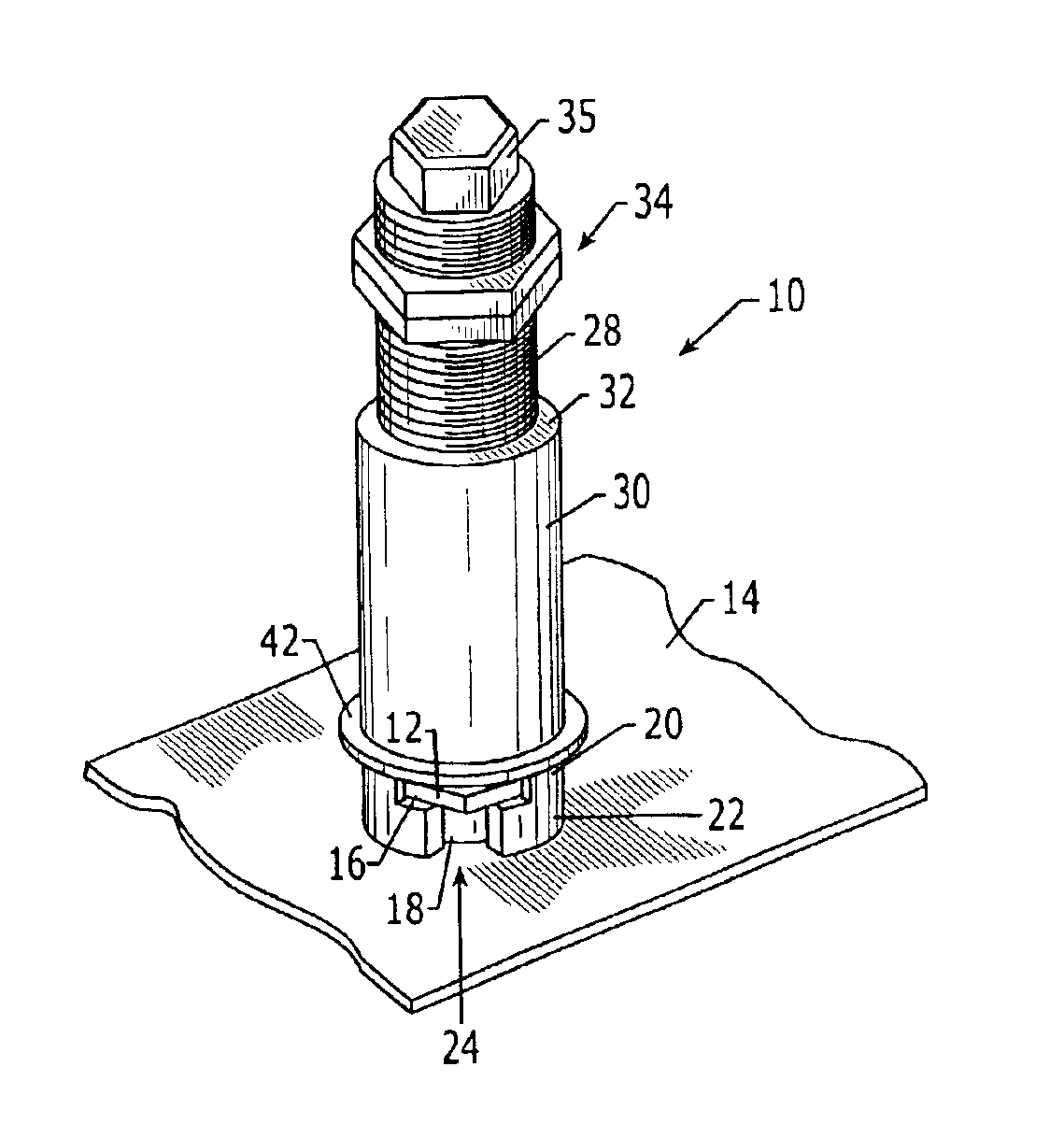Apparatus for removing a fastener from a workpiece
a technology for fasteners and workpieces, applied in the field of apparatus for removing fasteners, can solve the problems of limiting reducing the obvious value of fasteners, and the workpiece, and reducing the use of drift or punches. , to achieve the effect of reducing, if not eliminating, damage to the preventing damage to the threaded fastener and/or the workpi
- Summary
- Abstract
- Description
- Claims
- Application Information
AI Technical Summary
Benefits of technology
Problems solved by technology
Method used
Image
Examples
Embodiment Construction
[0029]The present inventions now will be described more fully hereinafter with reference to the accompanying drawings, in which some, but not all embodiments of the invention are shown. Indeed, these inventions may be embodied in many different forms and should not be construed as limited to the embodiments set forth herein; rather, these embodiments are provided so that this disclosure will satisfy applicable legal requirements. Like numbers refer to like elements throughout.
[0030]Referring now to FIG. 1, an apparatus 10 for removing a fastener 12 from a corresponding aperture defined by a workpiece 14 is depicted. The apparatus is capable of removing a variety of fasteners such as bolts, pins, rivets and the like. Regardless of the type of fastener, the fastener has a head end 16 that is accessible while the fastener is installed in the corresponding aperture defined by the workpiece. For example, the fastener may include a head end that sits upon or is recessed relative to the su...
PUM
| Property | Measurement | Unit |
|---|---|---|
| diameter | aaaaa | aaaaa |
| shape | aaaaa | aaaaa |
| non-orthogonal angle | aaaaa | aaaaa |
Abstract
Description
Claims
Application Information
 Login to View More
Login to View More - R&D
- Intellectual Property
- Life Sciences
- Materials
- Tech Scout
- Unparalleled Data Quality
- Higher Quality Content
- 60% Fewer Hallucinations
Browse by: Latest US Patents, China's latest patents, Technical Efficacy Thesaurus, Application Domain, Technology Topic, Popular Technical Reports.
© 2025 PatSnap. All rights reserved.Legal|Privacy policy|Modern Slavery Act Transparency Statement|Sitemap|About US| Contact US: help@patsnap.com



